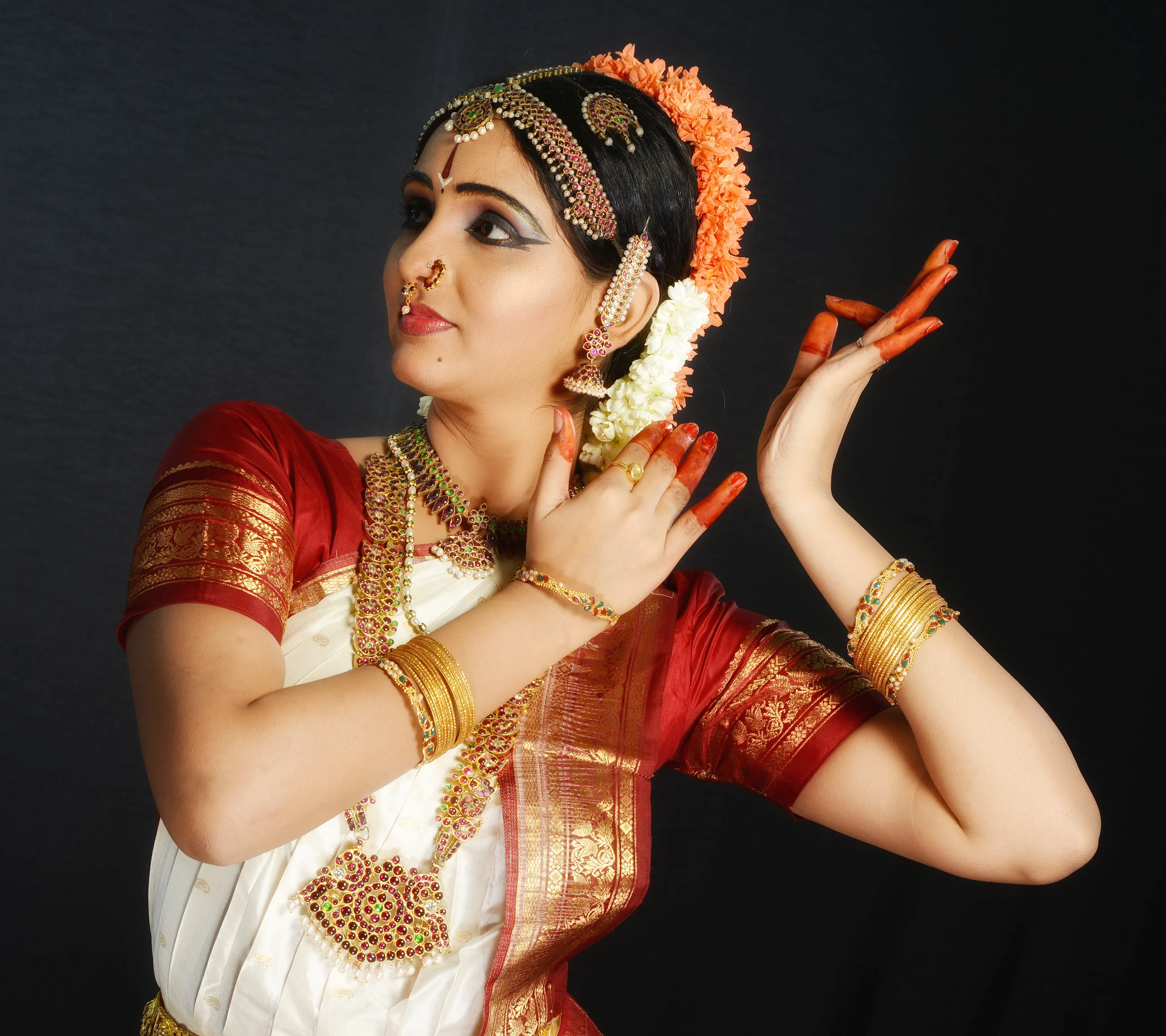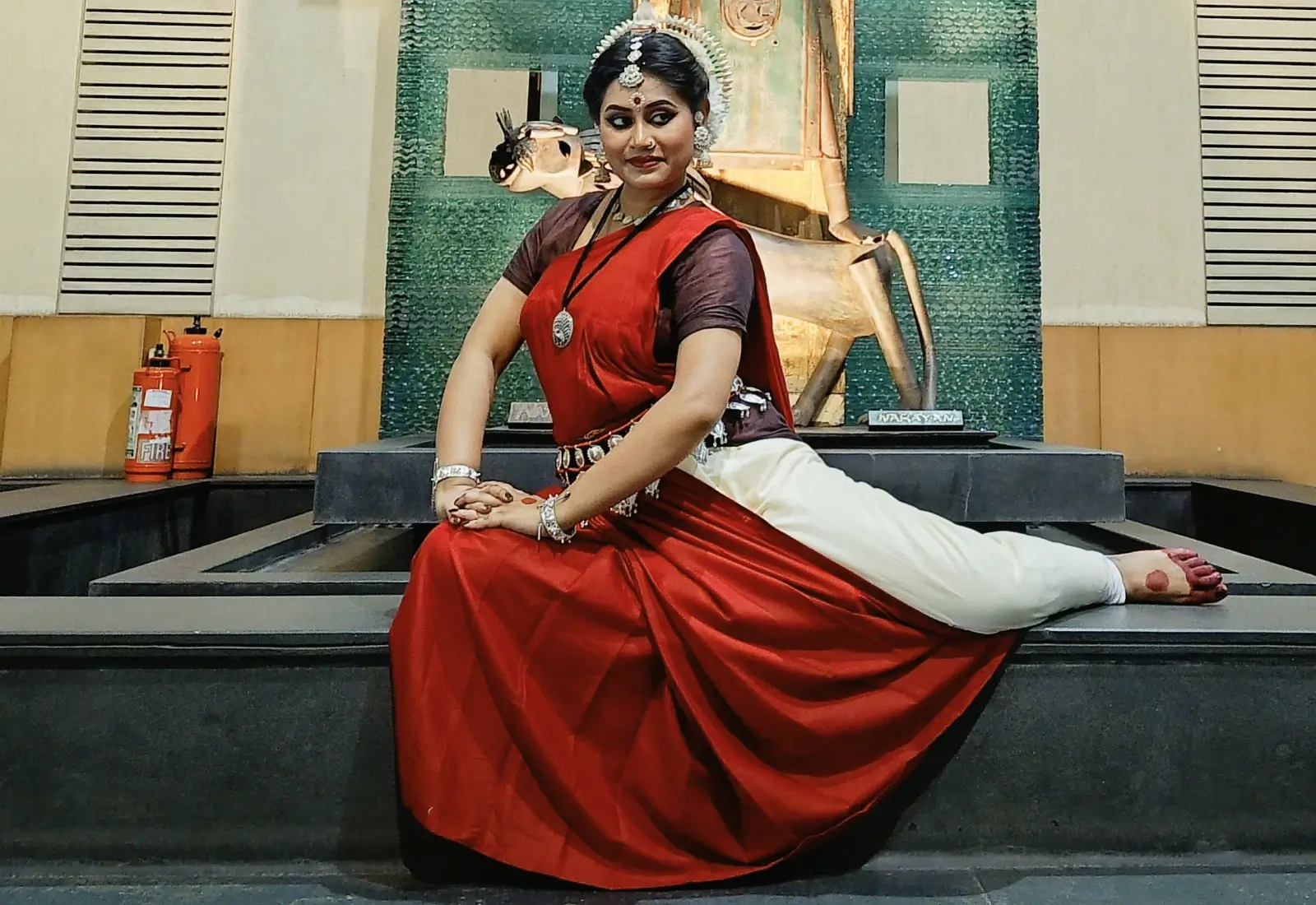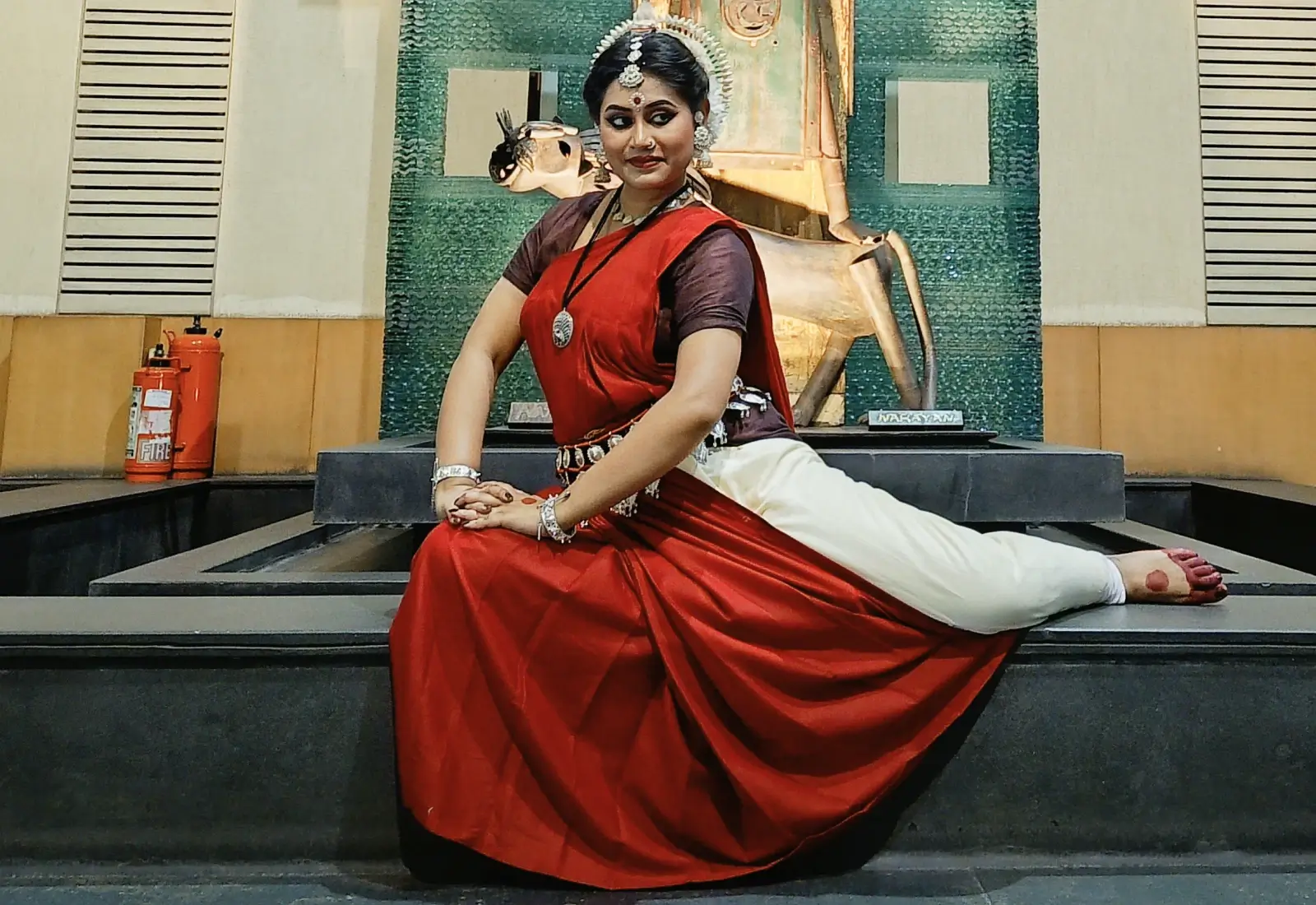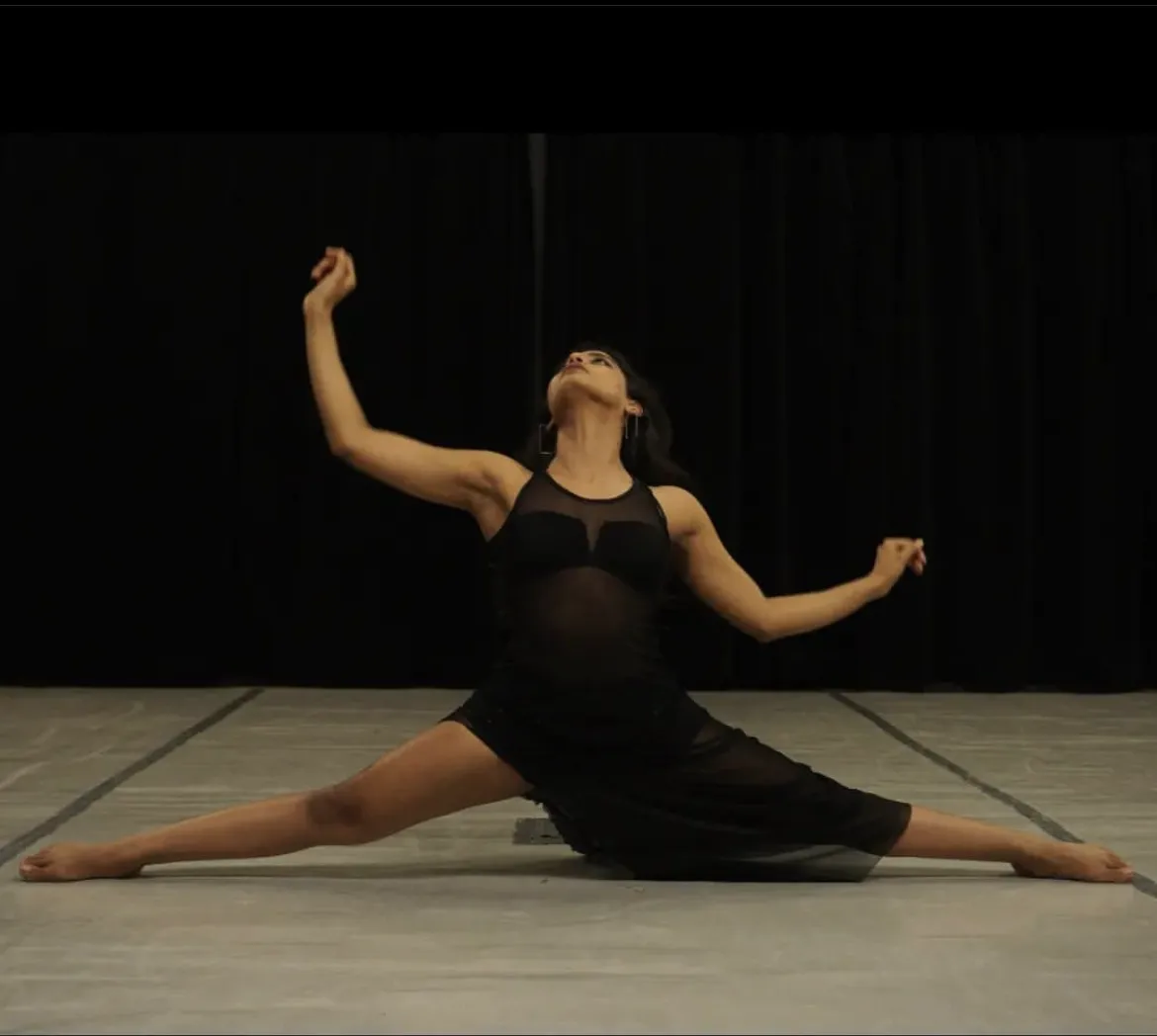Top
7 Indian Traditional Dance Forms with States
Dance finds its roots in the religious traditions in India. Devotion is the purest emotion that one can experience. When the heart is in an ecstatic state - it finds its expression in music. And when the joy brims over from the heart, it finds a way to express itself through dance - that involves every part of the body. Hence, devotional music and dance have always been an integral part of religious rituals and ceremonies in India.
The different Indian traditional dances originated from different regions of the country. Here, we will see how the individual regions contributed to the evolution of these dance forms individually.
Here are 7 Traditional Dance Forms of India with States
1. Bharatanatyam - Classical Dance of Tamil Nadu
2. Kuchipudi - Classical Dance of Andhra Pradesh
3. Odissi - Classical Dance of Odisha
4. Kathak - Classical Dance of Uttar Pradesh
5. Kathakali and Mohiniyattam - Classical Dances of Kerela
6. Manipuri - Classical Dance of Manipur
7. Sattriya - Classical Dance of Assam
Let's read about them in detail.
1. Dance of Tamil Nadu - Bharatanatyam
A small district in Tamil Nadu - Thanjavur or Tanjore is said to be the birthplace of Bharatanatyam. Earlier it was called Sadira Attam or Dasi Attam.
This classical dance of Tamil Nadu form is said to have flourished during the rule of the Maratha kings of the Bhonsle Dynasty between the 17th to 19th centuries. King Sherfoji II, is a name that deserves to be mentioned here. He was a great patron of art, music, and dance. He encouraged this dance form to grow during his regime.
Tanjore quartets - Ponnaya, Chinnaya, Shivanandam, and Vadivelu were four brothers who learned this art form from their grandfather - Gangaimudu, and father - Subbarayan. They trained in the primeval Bharatanatyam and then modified it by codifying the postures, footwork, and hand gestures in a rhythmic pattern.
Later, dedicated practitioner and torchbearer of this legacy - Rukmini Debi Arundale brought this dance form out from the custody of the Devdasis. She gave it a respectable place as a mainstream performing art.
2. Dance of Andhra Pradesh - Kuchipudi
Like any other classical dance form in India, Kuchipudi also draws its fundamental techniques and principles from Bharat Muni’s Natyashastra. Further, the Bhakti movement has had a major influence in originating and shaping the classical dance of Andhra Pradesh.
Siddhendra Yogi, a Vaishnava saint who lived in the 17th century, is credited with the codification and popularization of Kuchipudi as a distinct dance form. He introduced several innovations, blending elements of dance, music, and drama. Siddhendra Yogi is known for creating dance dramas called "Bhagavatam," which combine dialogues, songs, and dance sequences. His contributions, including the introduction of solo performances, enhanced the style of Kuchipudi.
Before Kuchipudi, the traditional dance of this region was Andhra Natyam or Lasya Natyam. It was characterized by solo performances by female dancers who were called Kalavantulu. Besides this, there we the folk dances of Andhra Pradesh such as Vilasini Natyam and Hari Katha, the melodies and rhythmic patterns of Carnatic music. Together they had a collective influence on how the body movements, hand gestures (mudras), facial expressions (abhinaya), and stagecraft of Kuchipudi as we see it today.
3. Dance of Odisha - Odissi
Two things that put Orissa on the world map are - the grandiosity of its temples and the Odissi dance. The dance postures are found to be carved out on the walls of the temples. It is indicative of the fact that the foundation of this dance form is steeped in devotion or Bhakti Bhav.
The origin of this dance form can be traced back to the ancient temples of Odisha, where it was practiced as a form of religious expression and performed as a part of temple rituals. Odissi has deep historical roots, with evidence of its existence dating back to the 2nd century BCE. The ancient temples of Odisha, particularly the Sun Temple at Konark, served as important centers for the development and patronage of the dance form. Sculptures and reliefs found in these temples depict dancers in various poses and movements that are characteristic of Odissi.
Earlier, a group of women called Mahari used to perform the Odissi dance in the temples. The word Mahari refers to Mahan Nari - one who is devoted to God. Their dance was a significant part of the daily rituals in front of the deity of Orissa - Jagannath Deva.
Another dance style - Gotipua - often referred to as the precursor of Odissi was practiced in the courts and on the streets of Orissa. Gotipua was performed by boys who dressed as girls. Odissi has evolved from Gotipua and Mahari.
A notable milestone in the development of Odissi was the composition of the Gita Govinda by the 12th-century poet Jayadeva. The Gita Govinda is a lyrical poem that narrates the divine love of Radha and Krishna. It provided a rich source of inspiration for Odissi, with its emotional themes, poetic verses, and musicality. The dance form incorporated episodes from the Gita Govinda into its repertoire, solidifying its connection to Odisha's cultural and literary heritage.
Odissi is characterized by its graceful movements, intricate postures, fluid footwork, and expressive gestures. The repertoire of Odissi includes traditional items like Mangalacharana (invocation), Pallavi (abstract dance), Abhinaya (expressive pieces), and various dance dramas based on mythological and literary themes.
4. Dance of Uttar Pradesh - Kathak
Kathak dance originated from the northern Indian state Uttar Pradesh (U.P). One of the eight classical dance forms in India, Kathak also finds its roots in Natya Shastra. As the name suggests, Kathak comes from the word Katha - meaning stories. Kathak or Kathakar is a term used for storytellers.
During the Mughal era, especially in the 16th and 17th centuries, Kathak received significant patronage in the royal courts of Uttar Pradesh, particularly in cities like Lucknow and Faizabad. The Mughal rulers, including Emperor Akbar and his successors, admired and supported the art form, incorporating it into their cultural activities. Kathak dancers were employed in the royal courts and performed for the pleasure of the emperors and their nobility.
The interaction between the temple traditions and the influences of Persian and Islamic cultures led to the fusion of styles that shaped Kathak. The Persian influence introduced elements like storytelling, poetry, and expressions of courtly love into the dance form. Kathak absorbed these influences while retaining its core techniques and rhythmic patterns.
Kathak was primarily used to narrate Krishna Leela. The bol or syllables, taal, and lay are the most significant parts of this dance form. This is a dance form that teaches you the art of speaking with feet.
It is beautifully explained by Birju Maharaj. The training starts with a basic footwork practice named tatkaar. The students keep their hands folded, palms placed one on top of the other, starting with the right feet and then, alternating the feet with the basic bol of - Ta Thei Thei Tat | Aa Thei Thei Tat. Birju Maharaj calls it is ‘maha mantra’ of Kathak that a student has to chant with his/ her feet. He also says that the mode of speech in Kathak is through the Ghungroo and hand movements are used to render shape and form to the repertoire.
Kathak has been practiced mostly in North Indian cities like Varanasi, Lucknow, Allahabad, and Jaipur. It flourished during the Mughal era as it became the most sophisticated and graceful presentation made by the courtesans in that era. During the Bhakti movement, Kathak became a medium to establish love as the core of devotion. Tales of Krishna with Radha and other Gopinis were narrated through Kathak dance. In this period, Kathak evolved as a mode of worshiping God through dance.
5. Dances of Kerela - Kathakali and Mohiniyattam
Kathakali
It is hard to ignore the bright costume and the makeup of a Kathakali dancer. The energy level, poise, and grace of the dancers are unmatched.
Just like the name suggests - Kathakali refers to the narration of a story. This dance form was incepted in Kerela under the aegis of the prince of Karnataka. Two traditions of ancient India - Krishnattam or stories of Lord Krishna and Kutiyattam, meaning classical dance drama - are the precursors of Kathakali.
The themes of Kathakali are mainly taken from mythological stories of Ramayan and Mahabharat. In recent times, Kathakali dance presentations have also seen recreating Shakespearean plays.
The famous exponents in this dance form include - Kalamandalam Krishna Prasad, Kalamandalam Keshava Namboodiri, and Kalamandanlam Gopi - to name a few.
Mohiniyattam
Mohiniyattam, anchored by elements of Lassya, is one of the most graceful and spellbinding of all dance forms in India. It is explained through the mythological episode when Lord Krishna donned the garb of a female named Mohini.
This dance form is performed solely by female dancers. The white or off-white consume and the one-sided bun as the hair-do are the identifiable characteristics of the Mohiniyattam.
Just like other temple dances, Mohiniyattam was also banned during British rule. However, in the 1930s some of the Vallathol Narayan Menon, a Nationalist poet, revived this dance form. He established the Kerela Kalamandala dance school.
Later, exponents like - Thankomuni, Mukundraj, Krishna Paniker, and many others took up the baton to take this traditional art form ahead.
6. Dance of Manipur - Manipuri
From the far east of India comes a dance form that commemorates love. Manipuri dance, also known as Manipuri Raas Leela originated as a devotional temple dance that was performed in front of Lord Krishna. Eventually, it evolved as a medium of storytelling to narrate the divine love between Radha and Krishna.
Manipuri dance has a distinctive style that sets it apart from the rest of the classical dance forms in India. The first thing that catches the eye of this dance form is that its movements are very much measured. The hands never go above eye level, the elbows are also kept at a fixed distance from the torso.
The basic footwork is termed ‘chali’. ‘Lasya’ is a feminine step that involves gently lifting the body upon the toe and bringing it down in a soft and flowy manner. When the same step is performed with a small jump it is termed as ‘Tandav’ - which is a masculine expression.
The attire for Manipuri dance is also very unique, particularly that of the female dancer. And certainly, it deserves a special mention. The female costume is called ‘patoli’. The skirt, known as ‘Kumin’ is crafted into a stiff cylindrical form with a mix of fabric and a mesh of wire. It is embellished and covered with a layer of silk fabric.
The headgear includes a chura - a conical structure attached to a veil made of a net that covers the face of the female performer. The facial expression can be seen through the net.
The beauty and grace of Manipuri dance are ethereal, to say the least. It has made it to transcend the boundaries of a small state nestled amid the lofty Himalayan ranges at its eastern edge to be recognized as one of the major classical dance forms in India.
7. Dance of Assam - Sattriya
Assam is marked on the global map because of its folk dance - Bihu. However, the state also has in its treasures a unique gem like Sattriya - one of the major classical dance styles.
Sattriya dates back over 500 years. It originated in the Vaishnavite monasteries of Assam. This dance style is used to narrate mythological stories. Like any other classical dance style in India, Sattriya involves a blend of dance and acting.
Till the first half of the 19th century, Sattriya was practiced only by male dancers. Thereafter, it traversed from the sanctum to the metropolitan stage. Over time, Sattriya gathered many accolades from people from India and across the world.
Ending notes - 7 Dance Forms of India with States
The 7 traditional dance forms of India have been a medium of storytelling. From singing praises of gods and goddesses to narrating tales of princes and princesses from the mythologies, stories of love, gallantry, and much more.
Today, Traditional dance forms of India are revered all across the world. It gives the cultural identity of the country a distinctive edge. Each of these 8 dance forms has survived the test of time, seen the rise and fall of empires, and has thrived to evolve as the cultural identity of the country. It continues to inspire youngsters. It guides them to manifest their creativity and attain perfection.
If you want to learn any of these dance styles explore these online dance classes.














